From digital twins to decentralized treatment solutions, BHP Ventures is charting new territory in water technology investment. As the venture capital arm of mining behemoth BHP, this strategic investor brings heavy industrial expertise and substantial capital resources to bear on water innovation. With typical check sizes around $88 million and a laser focus on late-stage water tech companies, BHP Ventures represents a unique force in the water investment landscape. Their collaborative investment approach and global reach, particularly strong in the US market, makes them a compelling partner for water entrepreneurs ready to scale breakthrough solutions.
BHP Ventures is part of my Ultimate Water Investor Database, check it out!
Investor Name: BHP Ventures
Investor Type: CVC
Latest Fund Size: $880 Million
Dry Powder Available: Yes
Typical Ticket Size: >$75M
Investment Themes: digital twins, decentralized water treatment, PFAS
Investment History: $8000000 spent over 2 deals
Often Invests Along:
Already Invested In: Allonnia LLC, Summit Nanotech Corporation
Leads or Follows: Follow
Board Seat Appetite: Moderate
Key People: Marion Russell, Chris Davis, Erik Carbutt
The Strategic Waterscape

BHP Ventures has positioned itself as a strategic player in water technology investment by developing a sophisticated thesis focused on three key pillars: digital transformation, industrial water treatment innovation, and water security solutions.
At the core of their digital focus lies an emphasis on technologies that enable real-time monitoring, predictive analytics, and automated control systems for water infrastructure. The mining giant recognizes that digital solutions can dramatically improve operational efficiency while reducing water consumption across their vast operations. With water scarcity threatening mining operations globally, investments in digital water management represent both a strategic necessity and an opportunity to drive industry-wide transformation.
In the industrial treatment space, BHP Ventures targets technologies that address mining’s unique water challenges. Their approach aligns with broader industry trends around impact investing and environmental stewardship. The focus spans advanced separation technologies, water recycling systems, and contamination removal solutions. Of particular interest are innovations that can handle high mineral content, extreme pH levels, and complex dissolved solids – common challenges in mining operations.
The third pillar, water security, reflects BHP’s long-term strategic thinking about resource availability and sustainability. Investments in this category target breakthrough technologies in desalination, aquifer management, and water storage solutions. The strategy acknowledges that securing reliable water access is fundamental to mining operations’ continuity and growth, especially in water-stressed regions where many mining assets are located.
Beyond these pillars, BHP Ventures applies strict criteria around scalability and commercial viability. They seek technologies that demonstrate clear paths to widespread adoption and can deliver measurable improvements in water efficiency or quality. This pragmatic approach helps bridge the gap between promising innovations and practical implementation across BHP’s global operations.
Their investment thesis also emphasizes solutions that can create value beyond mining applications. This broader perspective enables BHP to participate in the growing water technology market while developing solutions that can benefit multiple industries. The approach positions them not just as a mining company investing in water tech, but as a strategic player helping shape the future of industrial water management.
Capital Deployment DNA
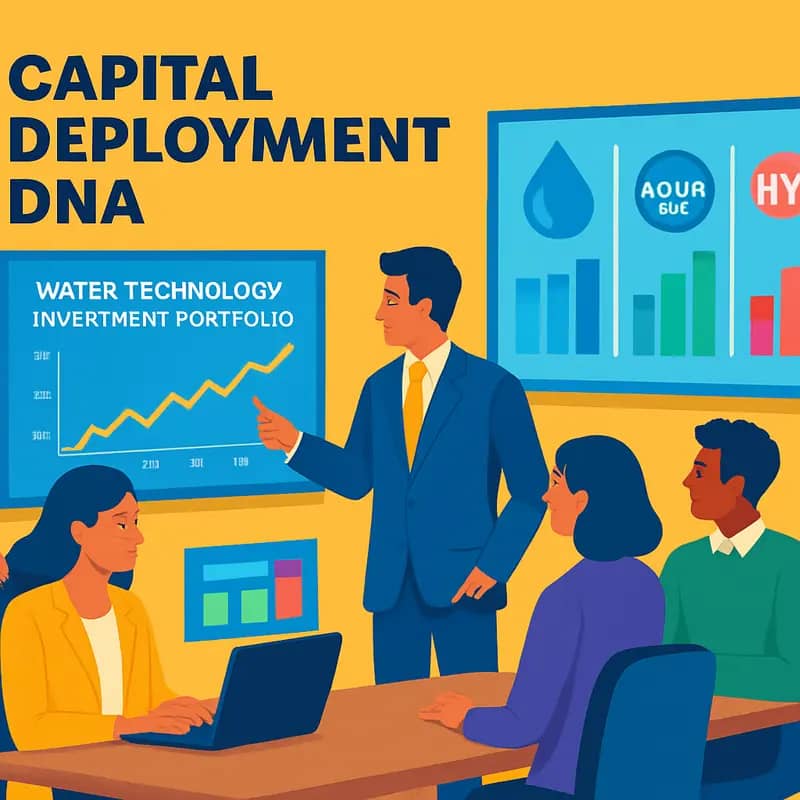
BHP Ventures’ investment approach reveals a distinct pattern focused on deploying substantial capital into mature water technology companies. Their typical check size of $88 million signals their commitment to late-stage ventures that have proven their technology and business models. This strategy aligns with their broader goal of securing reliable water solutions for mining operations while generating returns.
The firm’s preference for established water technology companies stems from a calculated risk assessment. Late-stage companies typically have validated market fit, established revenue streams, and operational track records that reduce investment uncertainty. This approach mirrors what’s discussed in how private capital can change the world of water for the better.
BHP Ventures’ deployment strategy follows three core principles. First, they seek companies with proven scalability potential, demonstrated through existing customer relationships and market penetration. Second, they prioritize technologies that address critical water management challenges in mining operations, including treatment, recycling, and monitoring solutions. Third, they look for strong management teams with industry expertise and successful commercialization experience.
Their investment thesis particularly favors companies that have successfully navigated the challenging “valley of death” between innovation and commercial success. These enterprises typically generate annual revenues between $20-100 million and demonstrate clear paths to profitability. By focusing on this segment, BHP Ventures can leverage its industry expertise and connections to accelerate growth while managing investment risk.
The firm’s capital deployment approach also reflects a strategic balance between financial returns and operational value creation. Their investments often include provisions for pilot programs and technology implementation within BHP’s mining operations, creating immediate commercial opportunities for portfolio companies while providing BHP with early access to innovative solutions.
This mature-stage focus distinguishes BHP Ventures from traditional venture capital firms that might spread smaller investments across earlier-stage companies. Their concentrated bets on proven technologies reflect both their strategic mandate to secure water solutions for mining operations and their commitment to driving industry-wide advancement in water technology.
Global Innovation Networks
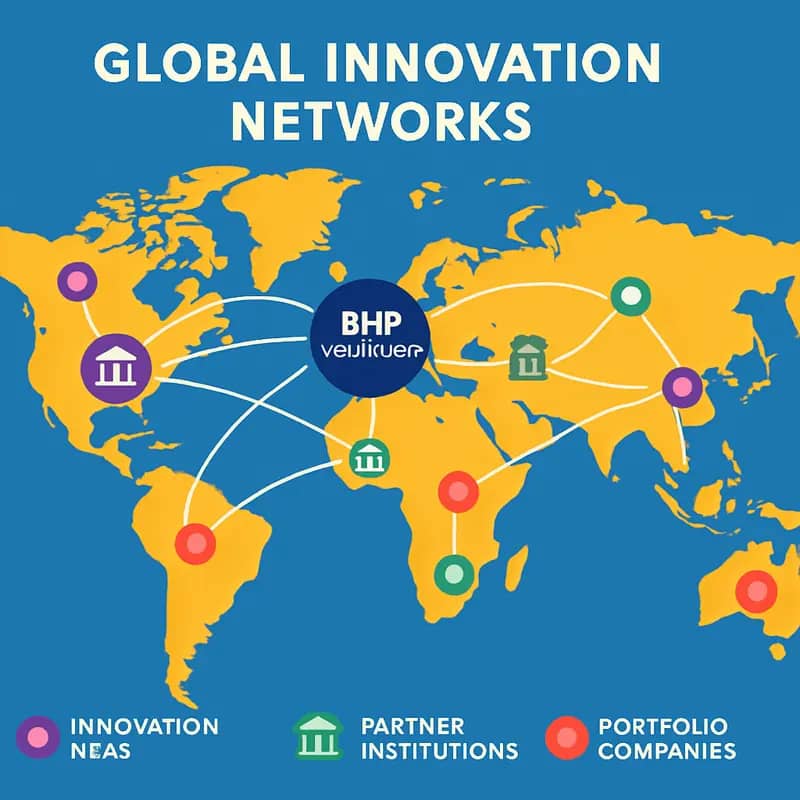
BHP Ventures has established a strategic web of innovation partnerships spanning key technology hubs worldwide, with a particularly robust presence in the United States. The venture arm’s geographical focus reflects a deliberate strategy to tap into diverse innovation ecosystems while maintaining strong ties to regions with advanced water technology development.
At the heart of BHP Ventures’ collaborative approach lies its partnerships with leading technology accelerators and research institutions. These relationships serve as force multipliers, extending the firm’s reach and technical capabilities far beyond traditional corporate boundaries. Their partnership model emphasizes long-term engagement rather than transactional relationships, allowing for deeper technical collaboration and more meaningful outcomes.
The venture arm’s strong U.S. presence is particularly noteworthy, with significant investments in water technology clusters around Boston, San Francisco, and Austin. This positioning gives BHP Ventures early access to breakthrough technologies emerging from premier research universities and established innovation ecosystems. The firm has developed structured programs for university collaboration, including research sponsorships, technology licensing agreements, and direct investment in academic spin-offs.
Beyond traditional venture investment, BHP Ventures operates a network of technical validation centers where promising water technologies can be tested and refined under real-world conditions. This infrastructure helps bridge the critical gap between laboratory success and commercial implementation, addressing one of the water sector’s most persistent challenges.
The firm’s partnership strategy extends to corporate collaboration, forming strategic alliances with established water technology companies to accelerate commercialization pathways. These relationships often begin with joint development agreements before evolving into deeper strategic partnerships or investment opportunities.
BHP Ventures has also pioneered a unique approach to ecosystem development through its water technology innovation challenges. These structured competitions not only surface promising solutions but help create lasting connections between entrepreneurs, researchers, and industry experts. The resulting network effects have proven valuable for deal sourcing and due diligence.
Leveraging these diverse partnership channels, BHP Ventures has positioned itself as a nexus point connecting various stakeholders in the water technology landscape. This multi-faceted approach to innovation networking has proven particularly effective in an industry where technical complexity and long adoption cycles make isolated innovation efforts challenging.
Future Flow
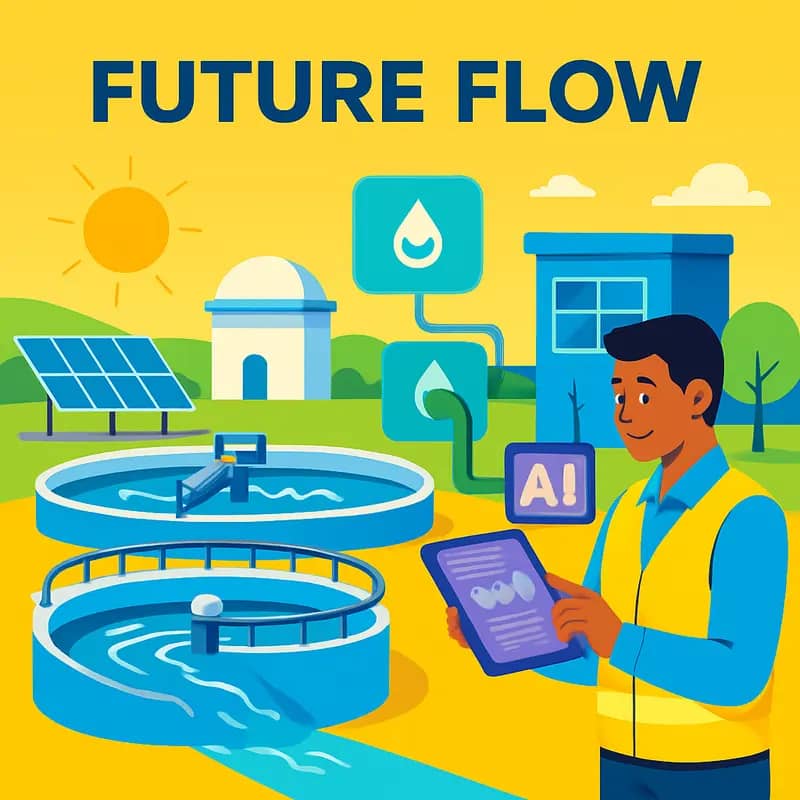
BHP Ventures is charting an ambitious course in water technology investment, focusing on innovations that promise to transform both mining operations and global water management. Their investment strategy increasingly gravitates toward solutions that merge sustainability with digital transformation, recognizing that tomorrow’s water challenges require a dual approach.
The venture arm’s portfolio reveals a growing emphasis on advanced analytics and artificial intelligence applications for water management. They seek technologies that can predict maintenance needs, optimize treatment processes, and reduce energy consumption across their vast mining operations. This strategic focus aligns with the mining giant’s commitment to reduce its environmental footprint while improving operational efficiency.
A particularly notable trend in their investment approach is the pursuit of closed-loop water systems. BHP Ventures actively scouts for technologies that can maximize water reuse and recovery, especially in water-stressed regions where their mining operations face increasing scrutiny and regulatory pressure. Their investment thesis prioritizes solutions that can demonstrate measurable improvements in water efficiency while maintaining or enhancing production capacity.
The firm’s commitment to sustainability extends beyond mere water conservation. They’re increasingly investing in technologies that address the water-energy nexus, recognizing that water management and energy consumption are inextricably linked. This includes backing innovations in low-energy treatment processes, smart monitoring systems, and renewable-powered water solutions.
Digital transformation remains a cornerstone of their investment strategy. BHP Ventures shows particular interest in platforms that can integrate real-time monitoring, predictive analytics, and automated decision-making. These investments aim to create more resilient and adaptive water management systems that can respond to changing environmental conditions and operational demands.
Looking ahead, BHP Ventures appears poised to expand its focus on emerging technologies that address climate resilience and water security. Their investment pipeline suggests increased attention to innovations in atmospheric water generation, advanced materials for treatment processes, and decentralized water solutions. This forward-looking approach positions them not just as financial backers but as architects of future water management paradigms in the mining sector and beyond.
From Mines to Moonshots: BHP’s Water Technology Vision
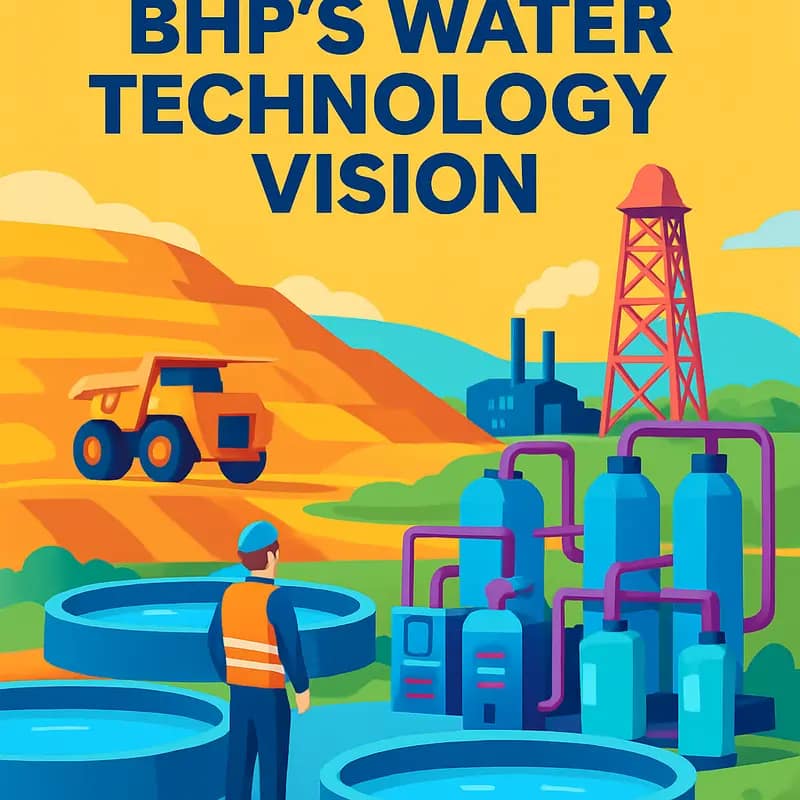
BHP’s venture into water technology innovation emerges directly from decades of operational challenges across its global mining operations. As one of the world’s largest mining companies, BHP faces unique water management hurdles that have shaped its strategic vision for water technology investment.
At the heart of BHP’s water challenges lies the fundamental tension between water scarcity and operational necessity. Mining operations consume vast quantities of water for mineral processing, dust suppression, and other critical functions. Many of BHP’s most valuable assets operate in water-stressed regions, from copper mines in Chile’s Atacama Desert to iron ore operations in Australia’s Pilbara region.
These operational realities have pushed BHP to identify three core areas where water technology innovation could transform mining operations. First is water efficiency and recycling, where even marginal improvements in water recovery and reuse can deliver significant operational and environmental benefits. Second is water quality management, particularly the treatment of complex mine-impacted waters containing dissolved metals and other contaminants. Third is the broader challenge of water security, including technologies for accessing and managing alternative water sources.
BHP’s venture arm approaches these challenges with a dual mindset – seeking solutions for immediate operational needs while simultaneously pursuing transformative technologies that could fundamentally reshape mining’s relationship with water. This approach aligns with what leading water technology investors have identified as crucial for success in the sector, as explored in how to get water as a service below utility prices with zero money down.
The company’s investment thesis rests on the belief that water technology innovation offers both operational advantages and strategic opportunities. By investing in emerging water technologies, BHP gains early access to solutions that could address its operational pain points. Simultaneously, these investments position BHP to capitalize on the growing global demand for water management solutions, particularly in industrial and mining applications.
BHP’s venture strategy reflects a deeper understanding that water challenges in mining mirror broader global water management issues. Technologies developed to address mining’s water challenges often have applications across other water-intensive industries. This creates potential for solutions that can scale beyond mining, expanding the commercial opportunity while contributing to global water sustainability goals.
The company’s approach to water technology investment emphasizes solutions that can deliver measurable improvements in water efficiency, quality, or security while being robust enough to operate in demanding mining environments. This practical focus on operational viability distinguishes BHP’s venture strategy from purely financial water technology investors.
Portfolio Deep Dive: Where Mining Meets Water Innovation
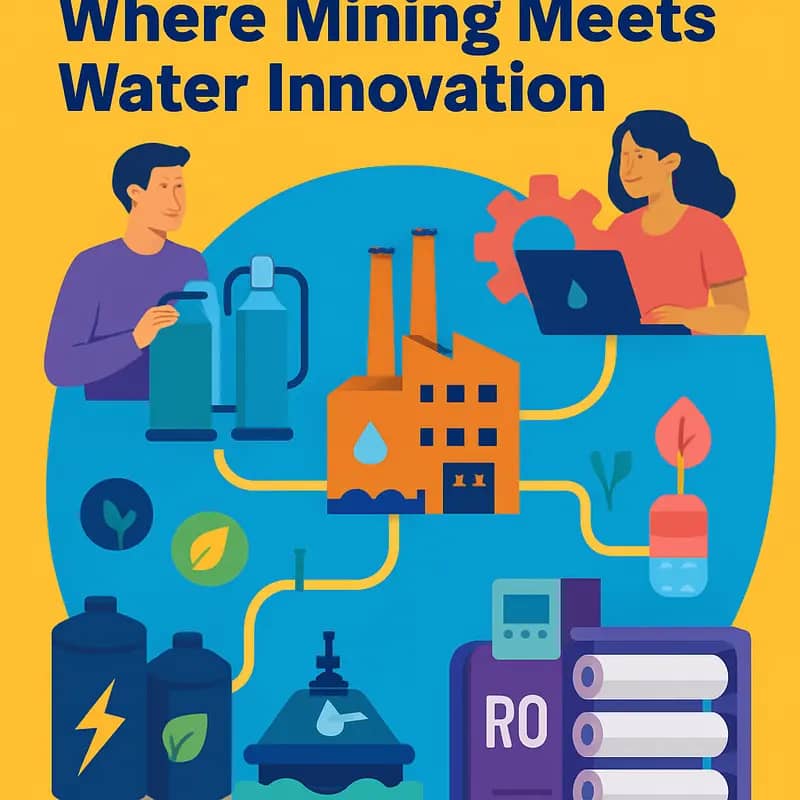
BHP Ventures’ water technology investment portfolio reflects a sophisticated understanding of mining’s unique water challenges. Through strategic investments, the venture arm has built a diverse yet focused collection of solutions addressing water scarcity, treatment efficiency, and environmental compliance.
At the core of BHP’s investment strategy lies a clear focus on three critical areas: water recovery and recycling technologies, advanced treatment solutions for mining-impacted waters, and smart water management systems. These priorities stem directly from the operational realities of modern mining operations, where water represents both a critical resource and a significant environmental responsibility.
The venture arm applies rigorous criteria when evaluating potential investments. Technologies must demonstrate clear potential for scale-up and integration within existing mining operations. Scalability ranks as a primary consideration – solutions must prove viable not just in controlled environments but across diverse mining contexts and challenging geographical locations.
Particularly noteworthy is BHP Ventures’ emphasis on dual-use technologies that address both mining-specific challenges and broader industrial water management issues. This approach aligns with insights from their groundbreaking water technology commercialization strategy, ensuring broader market potential beyond the mining sector.
The investment thesis also strongly favors technologies that support BHP’s commitment to environmental stewardship. Solutions that enable water reuse, reduce energy consumption, or minimize chemical usage receive particular attention. This environmental focus extends beyond immediate operational benefits to address long-term sustainability goals and regulatory compliance requirements.
Economic viability remains crucial in the evaluation process. Investments must demonstrate clear pathways to commercialization and realistic potential for returns. However, BHP Ventures takes a notably long-term view, recognizing that water technology development often requires extended timelines for testing and validation.
Technology readiness represents another critical factor in investment decisions. While the portfolio includes some early-stage innovations, preference typically goes to solutions that have progressed beyond initial proof-of-concept. This balanced approach helps manage risk while maintaining exposure to potentially transformative technologies.
The portfolio also reveals a strategic focus on digital integration capabilities. Selected technologies must demonstrate compatibility with existing digital infrastructure or contribute to the broader digitalization of water management systems. This digital emphasis reflects mining’s ongoing transformation toward more data-driven operations.
Through these carefully selected investments, BHP Ventures is not merely funding water technology development – it’s actively shaping the future of water management in mining and beyond. The portfolio stands as a testament to the company’s commitment to solving complex water challenges while creating value for both the mining industry and broader industrial water users.
Beyond ROI: Impact Metrics in Industrial Water Investment
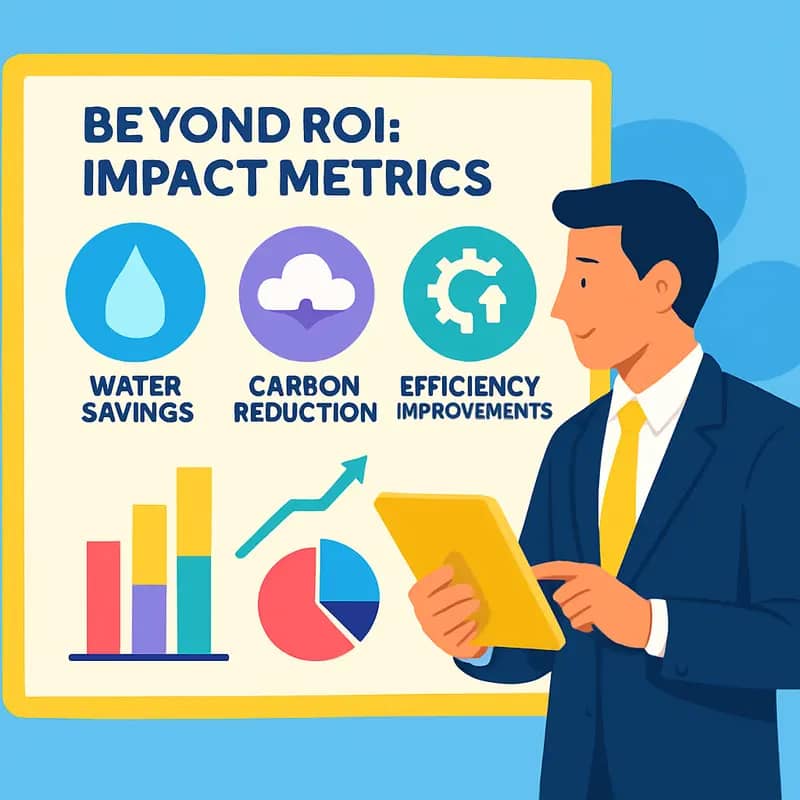
BHP Ventures has pioneered a comprehensive framework for evaluating water technology investments that extends far beyond traditional financial metrics. While return on investment remains crucial, the venture arm recognizes that lasting impact requires measuring success through multiple lenses that capture both quantitative and qualitative value creation.
At the core of BHP’s evaluation methodology lies water efficiency gains. The firm meticulously tracks gallons saved per dollar invested across its portfolio companies, with a particular focus on reducing freshwater consumption in water-stressed regions. This data feeds into broader environmental impact assessments that examine factors like reduced chemical usage, lower energy consumption, and decreased carbon emissions enabled by innovative water solutions.
Operational efficiency metrics form another critical pillar of BHP’s impact measurement approach. The venture team analyzes how water technology implementations affect key performance indicators like plant uptime, maintenance requirements, and labor productivity. These metrics help quantify the full value proposition of water innovations beyond direct cost savings.
Particularly noteworthy is BHP’s emphasis on measuring risk mitigation benefits. Portfolio companies must demonstrate how their solutions help mining operations build resilience against water-related disruptions, whether from drought, flooding, or regulatory changes. This forward-looking lens has proven especially valuable as climate change intensifies water security challenges.
Beyond pure metrics, BHP Ventures evaluates the scalability and replicability of water solutions across its global operations. A comprehensive guide to evaluating water technology investments can be found in our analysis of what decision-makers need to know. The most impactful innovations are those that can be readily deployed across multiple sites and commodities, maximizing both financial returns and sustainability benefits.
Recognizing that not all impacts can be captured in numbers, BHP also tracks qualitative outcomes like improved stakeholder relationships, enhanced social license to operate, and positive reputational effects. These softer metrics often prove crucial for securing internal buy-in and sustaining long-term support for water technology initiatives.
The firm’s multi-dimensional impact framework has become a model for industrial water investors, demonstrating how rigorous measurement can align profit with purpose. As water challenges grow more acute globally, BHP’s approach offers valuable lessons for organizations seeking to drive meaningful change through strategic water technology deployment.
The Future Flow: BHP’s Investment Roadmap
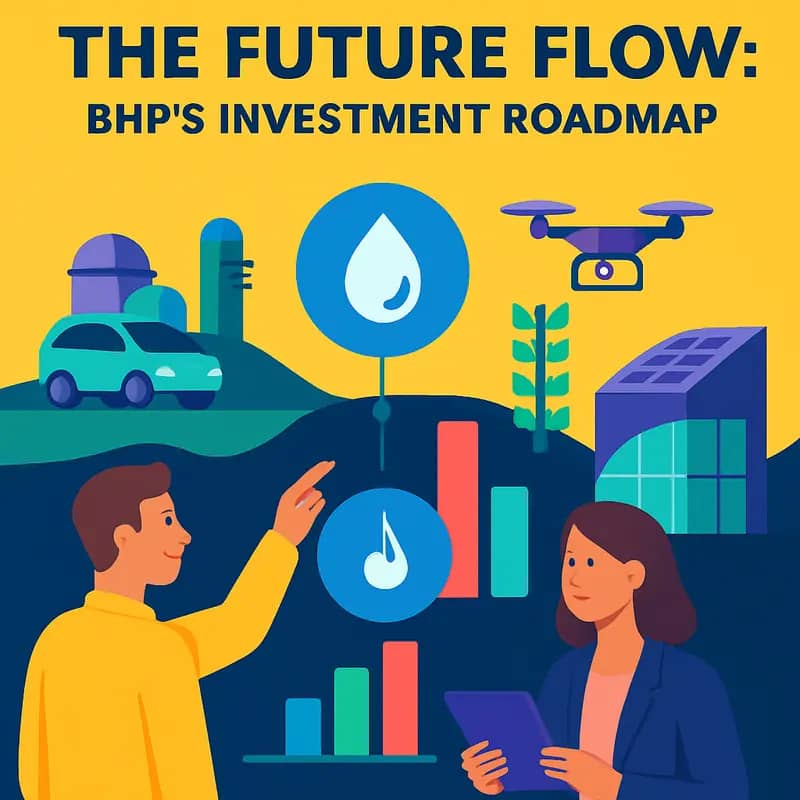
BHP Ventures stands at a pivotal moment in water technology investment, with emerging trends reshaping their strategic priorities for the years ahead. The company’s approach to water innovation mirrors broader shifts in impact investing, focusing on solutions that address multiple challenges simultaneously.
The venture arm’s investment roadmap centers on three key pillars: water efficiency optimization, circular water systems, and predictive analytics. Within water efficiency, BHP is targeting technologies that can reduce freshwater consumption in mining operations by up to 50% while maintaining or improving mineral recovery rates. This includes advanced membrane systems and enhanced evaporation control solutions specifically designed for harsh mining environments.
Circular water systems represent perhaps the most transformative investment focus. BHP recognizes that traditional linear water use models are becoming increasingly unsustainable. Their portfolio companies are developing closed-loop systems that can extract valuable minerals from waste streams while enabling water reuse. These innovations not only reduce environmental impact but also create new revenue streams from what was previously considered waste.
Predictive analytics and AI-driven water management form the third pillar of BHP’s future investment strategy. The company sees enormous potential in technologies that can forecast water-related risks, optimize treatment processes, and prevent system failures before they occur. This focus area includes sensors, machine learning algorithms, and digital twins that provide real-time insights into water system performance.
Beyond these pillars, BHP Ventures is increasingly considering climate resilience in its investment decisions. Technologies that can help mining operations adapt to changing precipitation patterns and extreme weather events are receiving particular attention. This includes innovations in water storage, rapid treatment systems, and drought-resistant processing methods.
The venture arm is also expanding its geographic focus, recognizing that some of the most promising water innovations are emerging from unexpected places. While maintaining strong ties to traditional innovation hubs, BHP is actively searching for technologies in developing markets where water challenges have spurred unique solutions.
Looking ahead, BHP Ventures plans to double its water technology investment portfolio within three years. However, this growth will be selective, prioritizing solutions that demonstrate clear pathways to scale and can be integrated across multiple mining operations. The focus remains on technologies that not only solve immediate operational challenges but also contribute to BHP’s broader sustainability goals.
Final words
BHP Ventures stands as a powerful force in water technology investment, bringing not just capital but deep industrial expertise and global reach to the table. Their strategic focus on late-stage companies, substantial check sizes, and collaborative approach makes them an ideal partner for water technology companies ready to scale. While their investment criteria may be selective, their commitment to advancing water innovation through strategic partnerships and technological advancement creates significant opportunities for entrepreneurs in the water space. For water technology companies seeking more than just financial backing, BHP Ventures offers a compelling combination of industrial expertise, global networks, and strategic support that can help accelerate the deployment of breakthrough water solutions.
Wanna explore the Full List of Water Investors that cut at least two checks over the past decade? Check it out and bookmark it, I update it regularly!
Learn more: https://dww.show/the-ultimate-water-investor-database/
About us
Through my ‘(don’t) Waste Water’ platform, I offer unique and insightful coverage of the water industry that combines technical expertise with engaging storytelling. If you haven’t yet, it might be time for you to subscribe to the podcast, the youtube channel and/or the newsletter!
